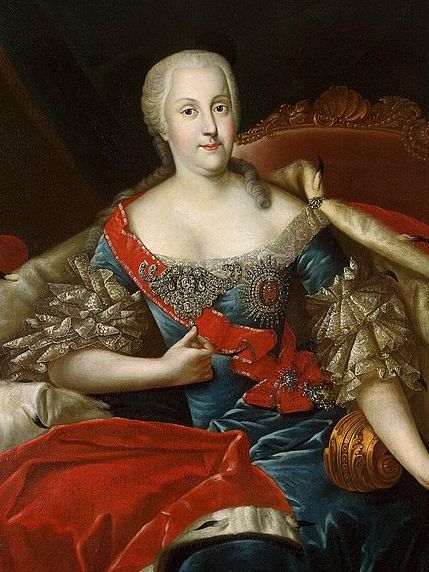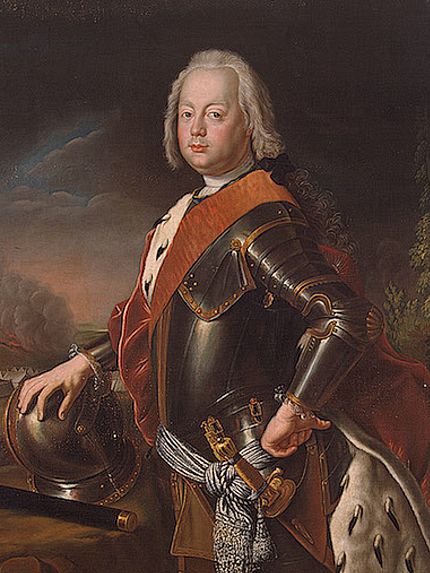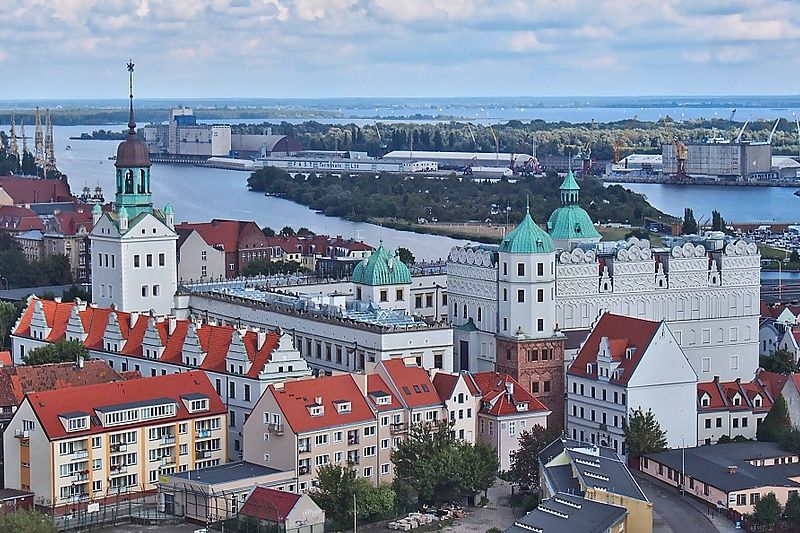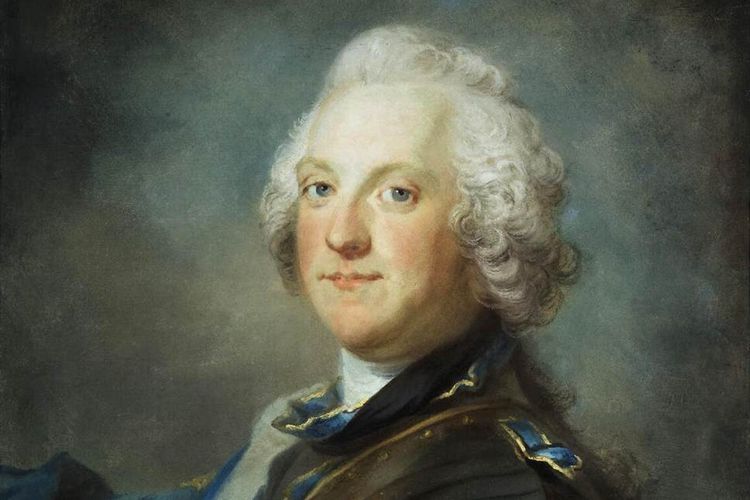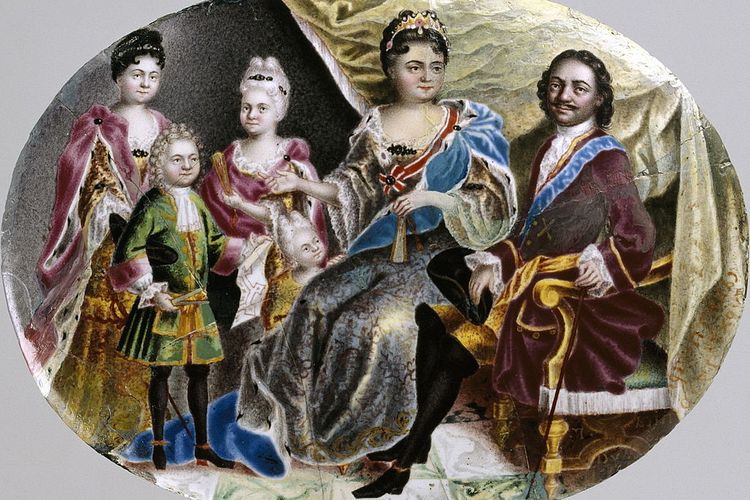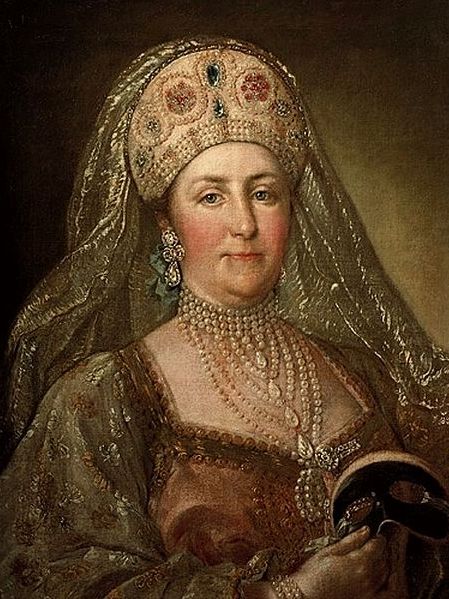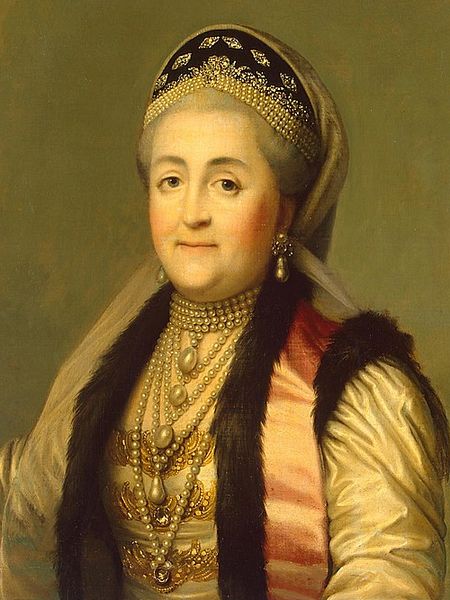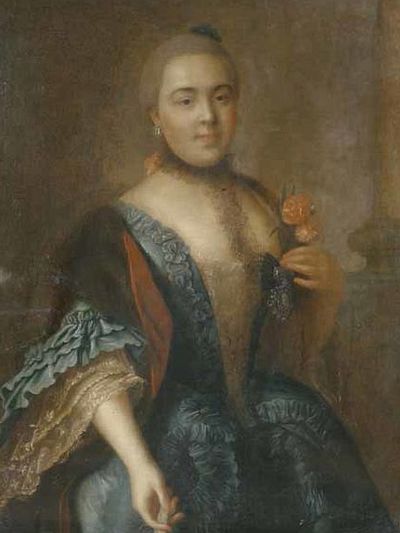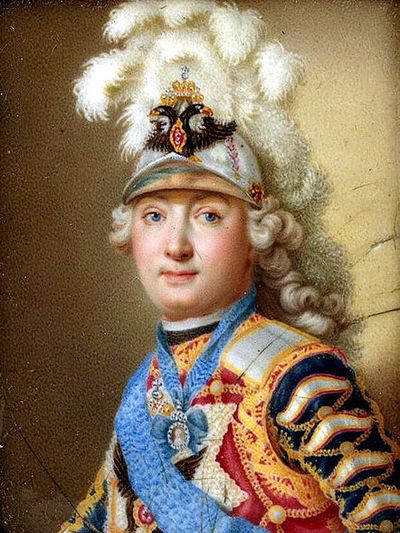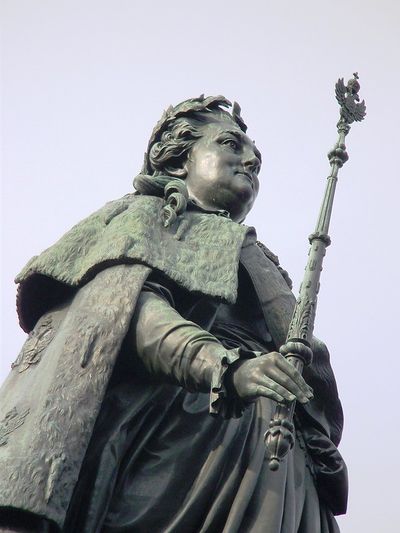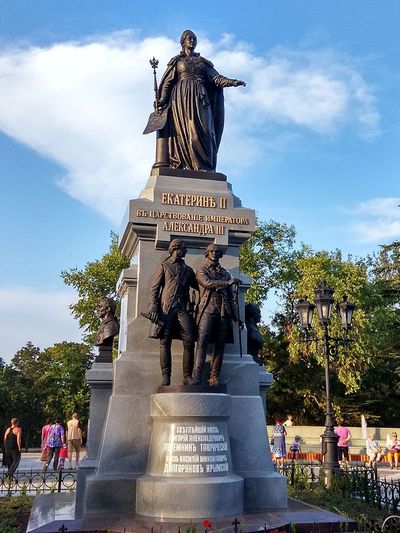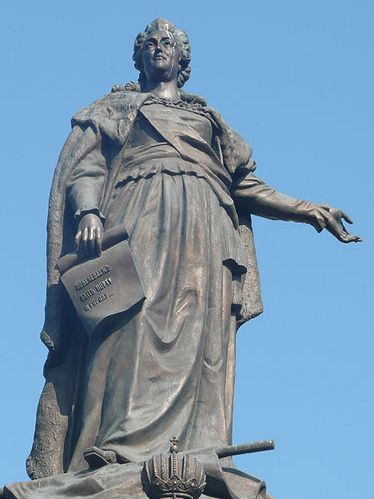Catherine the Great is remembered as one of Russia’s best rulers. Yet, she was not Russian by birth. Catherine was born a German princess from a minor-ish noble family. So how did the impoverished noble grab the Russian throne?
1. Catherine was a German princess
Catherine’s parents were Germans.
Catherine’s father was the governor of Stettin. The city that had recently fallen into Prussian (German) hands and he, a Prussian officer, had been sent there to rule it. So Catherine was born and raised in Stettin.
Catherine was raised in the governor’s big, white castle. Growing up, she used to play with the local kids. They allowed her to lead their games, partly out of deference for her rank and partly because of her innate leadership skills.
When Catherine was a teenager, her father, Prince Christian Augustus, took charge of the Principality of Anhalt-Zerbst. He had inherited it from his cousin. So the family moved again. They went to live in the family’s castle, which was prettier and had a higher status than the previous one. That made Catherine’s ambitious mother, Princess Johanna Elisabeth of Holstein-Gottorp, happier.
2. Catherine’s mom did not like her so much
According to Catherine’s memoirs, her childhood was unremarkable.
She was born on 2 May 1729. Her birth name was Sophia Augusta Fredericka of Anhalt-Zerbst. She changed it later on, when she moved to Russia.
Sophia spoke German, but her French governess, Babette, also taught her to speak French flawlessly. French would remain close to Sophia’s heart.
She was the eldest of five children. Her mother’s favorite child was Wilhelm, the heir to the principality. Meanwhile, Johanna paid little attention to Sophia and, apparently, did not like her very much. Sophia’s father was warmer but seldom saw her. Kindness really came from Babette, the governess who raised her.
Things were shaken up when Sophia was 13. Her brother Wilhelm died, and Johanna’s attention and ambition turned towards her daughter. Johanna now wanted an advantageous marriage for her.
3. Her family was well-connected
Sophia’s mother had a reputation for being dominating and not easy to deal with. But she was very well connected in Europe. She descended from Danish and Swedish kings.
Johanna’s brother eventually became the king of Sweden (1751) by a twist of fate. And one of Johanna’s connections would prove vital to Sophia’s ascension to the Russian throne.
Years before, two males from Johanna’s family, one of her brothers and her first-cousin, had been engaged to the daughters of Peter the Great, the emperor of Russia.
Peter was westernizing Russia and wanted to marry his daughters to European royals. He had easily married off his legitimate her. But his daughters were illegitimate, and their mother was a peasant. So the European royals declined to marry them.
Therefore, Peter betrothed his daughters to Johanna’s relatives. The boys had an impeccable pedigree. But since they were impoverished, marrying into a wealthy royal family was great for them.
The boys traveled to Russia. Johanna’s cousin did marry Anna Petrovna Romanov. But the second marriage did not take place.
Johanna’s brother and his fiance, Elizabeth Petrovna, fell in love and were eager to marry. But he died before the wedding, breaking Elizabeth’s heart. Then her father, Peter, died. Elizabeth eventually became the empress of Russia.
Elizabeth never married and remained very fond of Johanna’s family. And thanks to that, Sophia ended up in Russia.
4. Catherine is engaged to the future tsar

In the 1750s, Elizabeth became empress of Russia. She had no children, so she named her nephew Peter as her heir.
Peter was the son of her sister Anna and Johanna’s cousin.
Peter Ulrich of Schleswig-Holstein-Gottorp had been raised in Germany. By the time he was 11, both his parents were dead. So when Elizabeth ascended to the throne, she called him to the Russian court.
Now Elizabeth needed a suitable wife for the 15-year-old.
There were a lot of politics involved in the election. The king of Prussia, Frederick the Great, for example, wanted stronger ties with Russia, its enemy. And, above of all, he did not want his two enemies, Russia and Austria, to form a marriage alliance. So he was one of those who backed Sophia as a possible bride. Sophia was Prussian and a distant relation of his.
Judging the future tsarina with a critical eye
Johanna and her close relatives had been corresponding with the Prussian and Russian courts. They had been proposing Sophia as a match for the future tsar.
King Frederick was already on board, but he wanted to meet the girl in person and make sure she was right for the job. So he invited her to his court.
Once in court, Sophia attended a banquet. And she found herself sitting next to the king. At first, the 14-year-old was understandably shy. So the 32-year-old king tried every possible topic of conversation to draw the girl out. Finally, Sophia began talking back. They ended up having an extended, enjoyable chat. She would later write: “the entire company stared in amazement to see the king engaged in conversation with a child.”

She was not pretty, but Frederick realized she was intelligent and charming. She would be a perfect empress consort. She had Frederick’s green light.
Yet, there was one more approval to be earned.
In Russia, Empress Elizabeth had favored Sophia since the beginning. She was the niece of her beloved fiance. Plus, Peter and Sophia were about the same age, were both raised in Prussia, and came from the same family. Elizabeth thought that would make the cousins get along and ease Peter’s loneliness in his new country.
Yet, Elizabeth, too, wanted to seize Sophia in person before making the final decision. So she invited Johanna and Sophia to Russia.
The duo arrived in 1744, after meeting Frederick.
Decades after, in her memoirs, Sophia wrote that she had wanted the visit to be a success. She had desperately wanted the empress, her future husband, and the Russian court to like her. She had been determined to do whatever was required of her to achieve it.
She succeeded. Elizabeth took a liking to the bright, friendly girl who liked to please. Peter and Sophia were betrothed.
5. Catherine becomes Russian
Sophia kept her word and did her best to adapt to her new life.
She mastered the Russian language, although she would always speak it with a bit of an accent. And she learned everything about Russian culture.
In June 1744, she converted to the Orthodox faith, Russia’s religion. Sophia had a practical streak, so dismissing her old religion was not a problem for her. Her struggle was that her Lutheran father did not want her to convert. And Sophia, a people-pleaser, wanted to please both her father and the empress. She finally chose to fit in in her new life and converted.
During the ceremony, she took a new name: Ekaterina Alekseyevna (Catherine, daughter of Alexei). It was an homage to Empress Elizabeth’s mother, Catherine I. With that, she further ingratiated herself with Elizabeth.
6. The royal couple were cousins

Catherine and her future husband had actually met before in Germany.
At 11, Peter became an orphan. So he went to live with Johanna’s brother, who was Peter’s uncle.
Johanna had been parading Sophia through the European courts to find her a husband. And, alas, the heir to the Swedish throne became her brother’s ward. Johanna speedily took Sophia to meet the boy.
The cousins were almost the same age, she was 10, he 11, and they got along.
Two years later, Elizabeth named Peter her heir. So Peter renounced the Swedish throne and moved to Russia.
Four years after their first meeting, Sophia arrived in Russia. Homesick Peter was ecstatic to have other Germans and family members near. On her part, Sophia did everything possible to endear herself to Peter.
7. Catherine marries the heir

The cousins married on 21 August 1745, in Saint Petersburg. She was 16, and Peter, 17.
They were friendly towards one another at the beginning, but they were not in love. The marriage was never the happiest one.
They received the titles of Grand Duke and Grand Duchess and went to live to Oranienbaum Palace, near Saint Petersburg.
Catherine said that the following two decades were boring. As a foreign princess, the court mocked and humiliate her at the onset.
So she was lonely and spent all her time reading. She always had a curious mind and ended up having a vast general culture. The Grand Duchess especially loved reading the Enlightenment authors. That was a new movement that proposed the equality of all humans, among other revolutionary ideas.
The Enlightenment ideas had a lasting influence on Catherine. And once she was empress, she corresponded with two of the main authors of the movement: Voltaire and Diderot.
She later wrote that what kept her going during those early years was ambition. She knew she would wear the crown one day and wanted to be prepared for it.
Catherine also went into great pains to gain friends. Eventually, she befriended all the factions of the Russian court. She befriended the military, clergy, nobles, and everyone else who crossed her path. Catherine had a merry and sociable disposition. She laughed easily, liked giving gifts, and was a good listener.
She partly befriended everyone because that was her nature; she liked having friends. But she also did it because she was wise. She knew that once she was on the throne with Peter, they would need support to remain in power. It was all too common for Russian emperors to lose their throne.
8. Catherine is the wife of the tsar… but not for long

Elizabeth, empress of Russia, died in January 1762, and her nephew became Emperor Peter III. He was 33 years old.
Peter was not a wise tsar, and his reign was short-lived.
He may have had good intentions, some of the actions he took during his brief government back this. For example, he abolished the secret police that had tortured thousands of Russians. But he was not a good politician and lacked diplomatic skills.
For example, he had not grasped the importance of endearing himself to the Russians.
A Russian tsar… with a German heart
One of the greatest mistakes German-born Peter made was being too pro-Prussia. Meanwhile, he showed little love for the country he was to rule. Although he had Russian blood through his mother, he felt contempt for Russians. Peter considered German culture was far superior to Russia’s.
He never even bothered to learn Russian properly. And it can not be blamed on a lack of language skills. Peter spoke French, another foreign language, fluently.
Peter was an admirer of Prussian Emperor Frederick II, the man who had helped Catherine in her youth. But Russia and Prussia were enemies. And Peter’s aunt, Elizabeth, had started the Seven Years’ War between both countries. The Russians were winning. They had invaded Frederick’s homeland, and his correspondence shows he knew he was lost.
But when Elizabeth died, Peter saved Frederick. He made a treaty and even sent 12,000 Russian troops to aid him against his other enemies. That did not sit well with the Russians.
Then, Peter began a war against Denmark to recuperate his private lands in Germany. He spent Russian money and sent Russian soldiers to a war that was not for Russia’s benefit. The beneficiaries were himself and Germany. That did not sit well with the Russians, either.
With both decisions about the wars, Peter alienated the military.
Making more enemies
Then, the recently crowned tsar told his personal regiments, his guard, that he would punish them harshly for indiscipline. He alienated his guard.
And the tsar began enforcing his new laws that helped the serfs. The serfs were the Russian peasants who were basically enslaved. Peter’s laws were humane. But by trying to enforce them so soon and rashly, he alienated the serve-owning nobility.
Yet, the undiplomatic tsar was not done. Peter seized the vast lands of the Orthodox Church, Russia’s main church. He alienated the powerful clergy.
All of this, Peter did during the first six months of his reign. He made enemies of the military, his personal guard, the nobles, and the Church. There was no group left unoffended.
Furthermore, since his arrival in Russia, Peter had always surrounded himself with German friends. As tsar, he kept doing it. He set aside the Russians and populated his court with Germans. So his friends, too, were foreigners without ties to the Russian factions.
9. Catherine takes Peter’s throne
When Peter became tsar, he and Catherine were no longer getting along. And Peter had long been in love with his mistress Elizaveta, a Russian noble.
Catherine feared that he would divorce her or kill her to marry Elisaveta. At least, that is what she said later.
Perhaps she really did fear Peter would replace her. She was in a vulnerable position, after all. When Peter became tsar, she was in a relationship with Grigory Orlov and was pregnant with Orlov’s child. She already had two children, which Peter had recognized, but it is probable that they were not really his, and that he knew it.
If Peter set Catherine aside, he could marry Elisaveta, have more children, and name them his heirs. As soon as he had become emperor, Peter had moved Elizaveta to his palace and given her rooms next to his. The rumour in the European courts was that he was going to send Catherine to a convent and marry Elizaveta. It is possible that Catherine was truly panicking.
Or perhaps she realized that Peter was losing support fast and that he could be deposed. Or perhaps Catherine just wanted to be empress herself.
Whatever the motive, it is certain is that Catherine was ambitious and did not want to be cast aside.
So she stroke first.
Deposing an emperor

Catherine was much wiser than Peter. She had thoroughly Russianized herself. From the beginning, she learnt the language and culture. And she had befriended all the factions of the Russian court.
Now that she was at odds with her husband, she sought the support of the bands slighted by him. The Senate, the nobles, and the Church were on her side.
And her lover, Grigory Orlov, controlled several military units. So with his help and regiments, she marched from Saint Petersburg to Oranienbaum Palace. Peter was vacationing there with his German friends.
On her way, Catherine stopped at the barracks of the Semenovsky Regiment. There, Orthodox priests blessed her as Catherine II, the sole empress of Russia.
With her regiments, the Senate’s approval, and the Church’s blessing, she surrounded Peter. He was forced to abdicate.
Eight days later, on July 17, 1762, he was dead. He had been tsar for 6 months.
Killing an emperor

How exactly Peter III died is a mystery.
Alexei Orlov, the brother of Catherine’s lover, was in charge of the prisoner. Some believe Alexei strangled him. Others think Peter was tortured and died from the wounds. The official report, after an autopsy, said he had died of a stroke.
But if it was foul play -like it probably was- it is not likely that the official report would state it. Catherine always claimed she had not ordered the murder.
It is possible that her lover Grigory Orlov acted on his own. But Catherine was not naive, and having the true heir to the throne around was not going to be safe for her reign. So it is also possible that she did give the order to kill her husband.
The cloud of his murder hung over her reign. The Russian people thought she had killed him. So did the European courts.
Read next. Catherine the Great’s Lovers: These Are the 12 Men She Loved
10. Catherine the Great was a good leader
Catherine was the empress of Russia for 34 years.
Arguably, she was a good leader. Catherine was a strong monarch who did not rule by fear -as some of her predecessors had. She could be tough but preferred mercy when possible. She tried to turn her enemies into friends.
Catherine was intelligent, wise, and (self) educated. She did not act rashly. She pondered her decisions and listened to advice. She surrounded herself with capable -or brilliant- advisers and ministers.
The empress held absolute power, yet she did not like to abuse it. And she was able to delegate authority, as she did with her right-hand Grigory Potemkin.
Also, when she overtook projects like the reform of the educational system or the creation of a new code of law, she formed commissions of experts and relied on them to come up with solutions.
When Catherine came to power, all of Europe thought she would be deposed soon. Her predecessor had lasted only six months on the throne. There was another tsar locked in a tower. A relative of his took his throne and locked him away. Catherine’s successor would be murdered five years into his reign. Yet, Catherine managed to stay more than three decades on the throne until her natural death.
Her objectives and the Russian verdict
The empress had two main objectives from the beginning of her reign.
One was, following the principles of the Enlightenment, to better the lives of her subjects. The other was to make Russia great. And she also wanted to be remembered as a magnificent sovereign.
As to what Russians think of her, well, they love her. Even during the communist times, when the monarchy was looked-down upon, Russians were proud of Catherine. Her statues can be found in many Russian cities as well as in Ukraine and other territories she ruled over.
Read more: Why Is Catherine the Great Called ‘Great’? Her Accomplishments
More Articles
